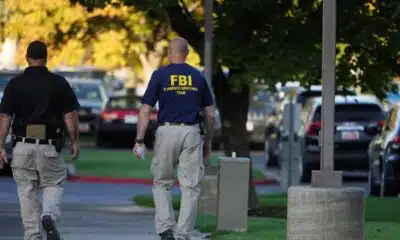Kaiser Health News
Wait, What’s a PBM?
by Dan Weissmann
Thu, 13 Jul 2023 09:00:00 +0000
Pharmacy benefit managers, or PBMs, are intermediary companies that negotiate the price of prescription drugs. PBMs are at the center of a tangled knot of pharmacies, drugmakers, and health insurers.
Experts say they play a big role in raising prescription drug prices.
So, what is being done to regulate PBMs?
In this episode of “An Arm and a Leg,” host Dan Weissmann explores how PBMs work and looks into government efforts to check their power. Since this episode originally aired in 2019, widespread legislation to regulate PBMs has been introduced at the state level. Weissmann gives an update.
Dan Weissmann
Host and producer of “An Arm and a Leg.” Previously, Dan was a staff reporter for Marketplace and Chicago’s WBEZ. His work also appears on All Things Considered, Marketplace, the BBC, 99 Percent Invisible, and Reveal, from the Center for Investigative Reporting.
Credits
Emily Pisacreta
Producer
Adam Raymonda
Audio wizard
Whitney Henry-Lester
Editor
Ellen Weiss
Editor
Click to open the Transcript
Transcript: Wait, What’s a PMB?
Note: “An Arm and a Leg” uses speech-recognition software to generate transcripts, which may contain errors. Please use the transcript as a tool but check the corresponding audio before quoting the podcast.
Dan: Hey there —
You may have seen ads recently about access to drugs. Here’s one that starts with a woman trying to fill a prescription, but the pharmacist says…
[Clip from an ad plays]
Pharmacist: I’m sorry, this medicine isn’t covered by your insurance.
PBM: Yeah…
Dan: This guy in a blue suit comes up from behind. The patient grabs her prescription slip.
[Ad clip resumes]
PBM: I decide which medicines you can get.
Patient: Wait, you’re not my doctor.
PBM: That’s right, I’m your insurance company’s pharmacy benefit manager, or PBM. And, I don’t make as much money off this one.
Dan: You might wonder, wait, what’s a PBM exactly? And also, why am I seeing this ad now?
And who’s paying for this ad? So PBMs are middleman companies that have a lot to do with which drugs we get access to, how much we pay for them, and yeah, they’re sharks. And, these ads are out there because Congress knows we’re all mad about drug prices and access to drugs, and they’re eager to be seen doing something about it.
And those ads are paid for by pharmaceutical makers — also sharks — in direct competition with PBMs for the gazillions of dollars we spend on drugs as a country. PBMs and their role are a little more complicated, so we are bringing back an episode from this show’s very early days. When we get to the end, I’ll have some updates, things I’ve learned since then.
Meanwhile, here’s me four years ago, starting to figure out how all this works.
So at the beginning of the year, my family switched to a new health insurance plan and I’ve got this prescription I take. I get three months worth of it at a time, and in February it was time to renew. The drugstore texted me they had it. I called to check, got the robot voice.
Robot: There’s one prescription here for Daniel
Dan: And some news.
Robot: The out-of-pocket cost is $720.69. And that’s ready for pickup.
Dan: I was like, what? This is an old-time generic drug. I’m used to paying like 15 bucks.
Robot: Would you like me to repeat that?
Dan: I was like, maybe you better. I want this on tape.
Robot: The out-of-pocket cost is $720.69.
[Robot voice fades into the background]
Dan: I was also like, yeah, I’m just gonna bring my new insurance card over to the drugstore and hope that clears things up.
And it did. The copay was $0. That is some good new insurance right there. And as I walked outta the drug store, I was like, What was that all about? I pulled up a site called GoodRx on my phone. A doctor friend of mine sometimes recommends it to people whose prescriptions cost a lot, and what I found there was weird.
I punched in the name of the medication and my zip code and it showed me prices from a bunch of different places. Drugstore chains like CVS and Walgreens, big box stores like Costco and Walmart, local supermarkets with pharmacy counters. And the spread was crazy. 25 bucks at Costco, 170 at the supermarket, 300-some at CVS, and more than 700 at my drugstore, Walgreens.
And that was just the first set of prices. There were actually two. The first: what you’d pay if you just walked in. The second was what you’d pay at each place if you brought in a digital coupon from GoodRx. And with the coupons, another crazy spread, a bunch of $20 options. But 75 bucks at CVS, 195 at Walgreens.
And this was just super, super weird. And it meant I was gonna have to do something I’d been honestly kind of dreading… Figuring out prescription drug prices. I’d done some reading about it before and it always made my eyes glaze over. I was like, ah, no. Too complicated. Let me come back to this, like in some other lifetime.
But this was too weird not to investigate. Because I was used to seeing stories about high drug prices. I figured we all knew that, but I wasn’t used to seeing stories about random prices. That was new. Better get on that. This is An Arm and a Leg, a show about the cost of health care. I’m Dan Weissmann.
And I did some reading and eventually I figured out how to maybe explain this to myself without getting totally lost.
And I ended up running this explanation by some experts and they all said, that is not the most idiotic explanation. So here goes. It starts with the old movie It’s a Wonderful Life. Right at the beginning of the movie, the Jimmy Stewart character, George Bailey, is a 12-year-old kid working in the drugstore.
Now, note the sound effect here from this scene. Clip clap. This is olden days, 1919. And in the scene, the kid keeps the pharmacist, Mr. Gower, from sending out literal poison pills.
Film sound: Mr. Gower, you don’t know what you’re doing. You, you put something bad in those capsules. It wasn’t your fault, Mr. Gower, just look and see what you did. The bottle took the powder from… it’s poison, I tell you, it’s poison.
Dan: Now late in the movie, there’s a scene with another character, a really grouchy bartender.
Film sound: Hey, look, mister. We save hard drinks in here for men who wanna get drunk fast, and we don’t need any characters around to give the joint atmosphere. Is that clear or do I have to slip you my left for a convincer?
Dan: And here’s the thing. At the time of these scenes, the druggist and the bartender were basically in the same kind of business. I’m talking about the structure of the business. You go to the bar, order a martini, the guy grabs the gin, the vermouth, some olives, mixes it up and tells you a price that reflects his negotiations with all his suppliers and his sense of local market conditions, what he thinks you’ll be willing to pay for a martini.
And he is balancing all those things and it’s like a straight line. You negotiate with the bar keep, he deals with everybody else. In 1919, Mr. Gower is in exactly the same kind of business, except instead of gin and vermouth, he’s got big jars, full of powders and okay, I mean, one of those jars is marked poison. I’m not sure what that’s about, but, okay. Mr. Gower measures out doses and sells them to his customers at a price he sets. Same exact deal. Simple.
Since then, a couple things have happened. First, scientific breakthroughs made drugs a much bigger deal. I mean, penicillin, insulin, the Polio vaccine, just for starters, it’s a miracle and a big business.
The other thing is, health insurance became a thing, including prescription drugs. So now you’ve got this intermediary standing between you and the provider, hashing out prices, telling you what your share is gonna be. And those two things created an opportunity for a new kind of business: pharmacy benefit managers.
Jeffrey Joyce is an economist at the University of Southern California. He studies the drug supply chain. He says, originally these companies did one narrow, technical thing. They created systems that told the drug store what each customer’s specific insurance plan meant that customer was supposed to pay for their specific prescription, and the systems did all that in real time.
Geoffrey Joyce: So that when you show up at the pharmacy, it’s a seamless transaction and they know exactly what your insurance is and what your copay should be.
Dan: Because Mr. Gower is not sending you a bill. He needs to ring you up right now. And insurance companies weren’t set up to make that happen. So pharmacy benefit managers, PBMs for short, that’s what they came along to do.
Geoffrey Joyce: That’s what they functioned primarily as for many, many years.
Dan: And then PBMs got this new idea. They said to their customers, the insurance companies, Hey, we could save you some money. How about we start negotiating with manufacturers to get you lower prices? Here’s how that works. There’s lots of kinds of drugs where different companies make their own version. Like for high cholesterol, there’s drugs called statins, and they’ve got brand names like Lipitor, Mevacor, Crestor.
But they all basically do the same thing. And that is an opportunity for the PBMs.
Geoffrey Joyce: They will go to the different manufacturers and say, who’s gonna give us the best price? Who wants to be our preferred statin?
Dan: And that preferred statin? That one’s gonna move a lot of units because the PBM and any insurance company they’re working for is gonna say to consumers: If you’re our patient, our customer covered by our insurance, we want you to take this statin and we’ll make it worth your while cuz this one, the preferred statin has a $10 copay and all the others 50 bucks, maybe 75, maybe we don’t cover them at all. And suddenly manufacturers are coming to the table.
Geoffrey Joyce: And manufacturers offer discounts or rebates. So, hey, I’ll give you 40 or 50% off if you make mine the preferred statin with a $10 copay. And all my competitors are either aren’t covered on your plan or have a $50 copay.
Dan: And here’s an important distinction. The manufacturers are not lowering their sticker prices here for whoever wants to buy. They are giving this rebate to this PBM. In other words, The PBM isn’t shopping. They’re not comparing the prices on offer in the open market. They’re negotiating. They’re cutting individual deals behind closed doors, but whatever, okay. At first, to an economist like Jeffrey Joyce, this whole set up sounds like great news.
Geoffrey Joyce: I bought into their arguments that they actually lowered prices by negotiating competitively and and with manufacturers.
Dan: Now, sellers can’t just charge whatever they want. They’ve gotta compete to give the best deal to buyers. Everybody wins. It’s like economics 101.
Geoffrey Joyce: In, in, in theory, you would want this type of entity. You want them to go around and say, who’s gonna gimme the best price?
Dan: But it hasn’t worked out that way, which is why Jeffrey Joyce published an essay last year called An Economist’s Change of Heart.
Geoffrey Joyce: So instead of sort of serving a, a role of, of constraining drug prices, I think they play a role in increasing drug prices.
Dan: Yeah, wait… How do we go from their holding prices down to their jacking prices up? That’s right after this break.
This episode of An Arm and a Leg is produced in partnership with KFF Health News. That’s a nonprofit newsroom covering health care in America. Their work is terrific, I’m so pleased to work with them. We’ll have a little more information about KFF Health News at the end of this episode.
So, how do pharmacy benefit managers go from holding prices down to jacking prices up? This is where Mr. Gower and Nick the bartender come in…
Once upon a time, before penicillin, before insurance, before pharmacy benefit managers, the relationships were simple. Me, Mr. Gower, his suppliers… straight line.
Now those relationships are a tangled knot. I found this super complicated flowchart made by Jeffrey Joyce’s, colleagues from the University of Southern California. It is from a paper called Follow the Money, except the money’s impossible to follow.
There’s insurance companies, manufacturers, pharmacies, money going back and forth. All over the place. And in this knot, the pharmacy benefit manager is in the middle of everything. Every loop, all the deals and all the money, it all goes through them.
Geoffrey Joyce: You’re right. And they’re the hub. You’re absolutely right. And I think that’s at the, the crook of it. They have an inherent conflict of interest.
Dan: That is: Everybody’s gotta negotiate with them. The drug makers, the pharmacies, and the insurance company, and nobody knows the deal anybody else is getting. So yeah, in theory, you’d want an entity like the PBMs negotiating on your behalf. But that’s not what they’re doing. They’re negotiating on their own behalf.
Geoffrey Joyce: And they got sued, uh, in several states for saying, “Hey, you should be acting in the best interest of your clients.” And they’ve won in court and saying, “No, we have no obligation to do what’s best for our client. We do what’s best for us.”
Dan: Okay. So how does that work and how does it lead to higher prices? Well, it helps. These companies have gotten huge. There used to be a bunch of PBMs, but they’ve gone around buying each other up. Now, three PBM companies represent like four fifths of all consumers. The single biggest one covers like 80 million people.
So they make a list of drugs for those 80 million people, which drugs cost $10? Which ones cost $50? And which ones. Aren’t covered at all. That list has a name. It’s called the formulary, and controlling a formulary with 80 million customers gives the PBM a whole new kind of leverage.
Geoffrey Joyce: Just let me put it this way. Imagine you are a manufacturer and you produce a good drug and Express Scripts says, we represent 80 million Americans in their drug benefits. If you’re off our formulary as a manufacturer, you lose access to 80 million consumers. That’s an enormous hit. You’ll do anything to stay on that formulary.
Dan: You’ll do anything the PBM wants. And what the PBM wants is a big discount and the devious, tricky wild part that Jeffrey Joyce taught me, the easiest way to give a big discount is jack up the sticker price, which sounds like it would never work. Like I know. We’ll double the price, then we can charge them the same, but we’ll tell them they’re getting a 50% discount. *nefarious laugh*
I mean, are PBMs supposed to be stupid? But PBMs aren’t stupid. Remember, they’re not shopping on the open market. They’re negotiating in secret, and they’re not just negotiating for discounts. They’re getting rebates, not money off, money back. A payout.
Geoffrey Joyce: It’s more money that potentially they can retain. Right? So the more, the bigger the rebate, that’s money. They have control over them.
Dan: It’s, it’s literally, it’s cash in their pockets.
Geoffrey Joyce: It’s cash.
Dan: And Joyce says, those negotiations get totally explicit. Raising prices is part of the deal.
Geoffrey Joyce: And so I’ve had several CEOs of drug companies tell me, PBMs put a gun to their head.
Raise your prices, i.e. raise your rebate, or you’re off our formulary.
Dan: And of course, doing business in a back room someplace is what makes all this possible.
Geoffrey Joyce: Everything is, is proprietary. No one can see what kind of discount or rebates they’re getting, and no one really knows how much is being retained and how much is being passed on. And anytime you have that lack of information and lack of clarity, there’s, it’s it’s a ripe environment for abuse and excess profit.
Dan: There’s just one other thing, and I’m kind of reluctant to tell you this cuz I have this rule about the show where it’s supposed to be more entertaining and empowering and maybe useful than it is enraging and terrifying and depressing. But I cannot hold back this part. So here it is:
That knot, that tangle of deals with money going back and forth and the PBMs in the middle of everything.That knot is getting tighter. Cuz the players are merging with each other. Those three big PBMs, one of them is CVS, the drug store chain, which is also merging with an insurance company, Aetna, and the other two?
One belongs to an insurance company, and the other is getting bought by one.
Geoffrey Joyce: They always argue there are economies of scale and synergies, et cetera. Historically, we’ve seen the consumers lose when you see greater and greater concentration within an industry.
Dan: Great. *exasperated sigh*
You know what’s funny? None of this quite answers the question I started with. Why were there so many prices for that one generic prescription I tried to fill? And it turns out, Jeffrey Joyce has actually done research on this narrow little question, random prices at the drugstore. He sent hundreds of USC students to drugstores in LA with fake prescriptions to fill. His findings: My experience was not a one-off. Not an accident.
Geoffrey Joyce: And it’s basically the drug store or whatever saying, Hey, here’s a consumer that may or may not know the price, and we can charge them what we think we can get away with.
Dan: So Mr. Gower is still with us, and he’s also trying to make a buck however he can.
Geoffrey Joyce: You or your child is sick and you need an antibiotic. You’ve maybe not used that antibiotic in the past, or it’s been a long time. You don’t know what the price of that is. You don’t know what a reasonable price is.
Dan: Your doctor’s like, you need a Z-Pak.
Geoffrey Joyce: Exactly.
And when you walk in, would you know if a Z-Pak is, you know, a hundred dollars? That that may be the price you have no idea.
Dan: So basically we gotta watch our backs with everyone, which is turning into kind of a theme on this show. And sometimes I guess an outfit like GoodRx can help us know if Mr. Gower is trying to put one over on us. And it offers discounts with those coupons it has. So I asked Jeffrey, Joyce, and the other experts I talked with, how do I need to watch my back with GoodRx?
I mean, there’s a catch right? And they said, no, not exactly, except that it’s, you know, just a bandaid. It’s not changing anything about the big picture with the PBMs and all the other players. In fact, when GoodRx shows us a coupon for a discount, it’s because they’ve made a deal with a pharmacy benefit manager behind the scenes to get it.
So GoodRx wrangles its prices outta that same crazy float chart, that same crazy knot that produce the jacked up prices we see. And presumably it’s finding a way to make a profit, but if a bandaid is useful to you, I guess it’s useful.
That’s where we left things four years ago.
I wanna recap my big takeaway from that Adventure: PBMs push drug makers to set higher list prices because the higher the list price goes, the bigger the rebate, the cash payout the PBMs can grab.
And here’s a couple things that we didn’t hit. By setting preferred drugs based on which company gives ’em the biggest rebates, and by making us pay super high prices for anything else. PBMs work with insurance companies to limit access to drugs.
And if you have a high deductible, or a copay, or percentage of list price you’re supposed to pay at the pharmacy counter, the PBM still gets their full rebate.
In other words, some of the money coming outta your pocket may go directly to them.
Some things have changed since we first put this story out. The biggest PBMs have gotten bigger. For instance, the biggest, Express Scripts, now covers 100 million people, up from 80 million.
And the biggest PBMs have been experimenting with new shenanigans — enough for at least a whole new episode.
But not all the news is bad. In the last few years, state legislatures have passed 150 laws attempting to regulate PBMs. Every state has passed at least one.
A few states have passed laws saying that PBMs have to pass rebates along the consumers at the pharmacy counter.
In other words, trying to stop the PBMs from that situation where they’re getting money directly outta your pocket.
Couple other states have passed laws saying PBMs cannot force you to use their mail order pharmacies, which great, but geez, I guess that means it’s legal in 48 states and Congress has held five hearings so far this year specifically on PBMs with members from both parties eager to get their licks in.
I am not saying that the cavalry or Congress is about to ride in and fix everything. I wish. But I am saying, by understanding better what’s going on, we can get a better sense of what we want our elected folks to do. I’ll catch you in a few weeks till then, take care of yourself.
This episode of An Arm and a Leg was produced by me, Dan Weissmann, with help from Emily Pisacreta and Bella Czajkowski. Whitney Henry-Lester edited this story in 2019, and Ellen Weiss edited this updated version.
Daisy Rosario is our consulting managing producer. Adam Raymonda is our audio wizard. Our music is by Dave Winer and Blue Dot Sessions.
Gabrielle Healy is our managing editor for audience. She edits the First Aid Kit Newsletter.
Bea Bosco is our consulting director of operations. Sarah Ballema is our operations manager.
An Arm and a Leg is produced in partnership with KFF Health News.
That’s a national newsroom producing in-depth journalism about health care in America, and a core program at KFF — an independent source of health policy research, polling, and journalism.
Zach Dyer is senior audio producer at KFF Health News. He is editorial liaison to this show.
Thanks to Public Narrative — That’s a Chicago-based group that helps journalists and non-profits tell better stories– for serving as our fiscal sponsor, allowing us to accept tax-exempt donations. You can learn more about Public Narrative at www.publicnarrative.org.
And thanks to everybody who supports this show financially.
If you haven’t yet, we’d love for you to join us. The place for that is armandalegshow.com/support.
Thanks for pitching in if you can, and thanks for listening!
“An Arm and a Leg” is a co-production of KFF Health News and Public Road Productions.
To keep in touch with “An Arm and a Leg,” subscribe to the newsletter. You can also follow the show on Facebook and Twitter. And if you’ve got stories to tell about the health care system, the producers would love to hear from you.
To hear all KFF Health News podcasts, click here.
And subscribe to “An Arm and a Leg” on Spotify, Apple Podcasts, Stitcher, Pocket Casts, or wherever you listen to podcasts.
By: Dan Weissmann
Title: Wait, What’s a PBM?
Sourced From: kffhealthnews.org/news/podcast/wait-whats-a-pbm/
Published Date: Thu, 13 Jul 2023 09:00:00 +0000
Kaiser Health News
How To Find the Right Medical Rehab Services
Rehabilitation therapy can be a godsend after hospitalization for a stroke, a fall, an accident, a joint replacement, a severe burn, or a spinal cord injury, among other conditions. Physical, occupational, and speech therapy are offered in a variety of settings, including at hospitals, nursing homes, clinics, and at home. It’s crucial to identify a high-quality, safe option with professionals experienced in treating your condition.
What kinds of rehab therapy might I need?
Physical therapy helps patients improve their strength, stability, and movement and reduce pain, usually through targeted exercises. Some physical therapists specialize in neurological, cardiovascular, or orthopedic issues. There are also geriatric and pediatric specialists. Occupational therapy focuses on specific activities (referred to as “occupations”), often ones that require fine motor skills, like brushing teeth, cutting food with a knife, and getting dressed. Speech and language therapy help people communicate. Some patients may need respiratory therapy if they have trouble breathing or need to be weaned from a ventilator.
Will insurance cover rehab?
Medicare, health insurers, workers’ compensation, and Medicaid plans in some states cover rehab therapy, but plans may refuse to pay for certain settings and may limit the amount of therapy you receive. Some insurers may require preauthorization, and some may terminate coverage if you’re not improving. Private insurers often place annual limits on outpatient therapy. Traditional Medicare is generally the least restrictive, while private Medicare Advantage plans may monitor progress closely and limit where patients can obtain therapy.
Should I seek inpatient rehabilitation?
Patients who still need nursing or a doctor’s care but can tolerate three hours of therapy five days a week may qualify for admission to a specialized rehab hospital or to a unit within a general hospital. Patients usually need at least two of the main types of rehab therapy: physical, occupational, or speech. Stays average around 12 days.
How do I choose?
Look for a place that is skilled in treating people with your diagnosis; many inpatient hospitals list specialties on their websites. People with complex or severe medical conditions may want a rehab hospital connected to an academic medical center at the vanguard of new treatments, even if it’s a plane ride away.
“You’ll see youngish patients with these life-changing, fairly catastrophic injuries,” like spinal cord damage, travel to another state for treatment, said Cheri Blauwet, chief medical officer of Spaulding Rehabilitation in Boston, one of 15 hospitals the federal government has praised for cutting-edge work.
But there are advantages in selecting a hospital close to family and friends who can help after you are discharged. Therapists can help train at-home caregivers.
How do I find rehab hospitals?
The discharge planner or caseworker at the acute care hospital should provide options. You can search for inpatient rehabilitation facilities by location or name through Medicare’s Care Compare website. There you can see how many patients the rehab hospital has treated with your condition — the more the better. You can search by specialty through the American Medical Rehabilitation Providers Association, a trade group that lists its members.
Find out what specialized technologies a hospital has, like driving simulators — a car or truck that enable a patient to practice getting in and out of a vehicle — or a kitchen table with utensils to practice making a meal.
How can I be confident a rehab hospital is reliable?
It’s not easy: Medicare doesn’t analyze staffing levels or post on its website results of safety inspections as it does for nursing homes. You can ask your state public health agency or the hospital to provide inspection reports for the last three years. Such reports can be technical, but you should get the gist. If the report says an “immediate jeopardy” was called, that means inspectors identified safety problems that put patients in danger.
The rate of patients readmitted to a general hospital for a potentially preventable reason is a key safety measure. Overall, for-profit rehabs have higher readmission rates than nonprofits do, but there are some with lower readmission rates and some with higher ones. You may not have a nearby choice: There are fewer than 400 rehab hospitals, and most general hospitals don’t have a rehab unit.
You can find a hospital’s readmission rates under Care Compare’s quality section. Rates lower than the national average are better.
Another measure of quality is how often patients are functional enough to go home after finishing rehab rather than to a nursing home, hospital, or health care institution. That measure is called “discharge to community” and is listed under Care Compare’s quality section. Rates higher than the national average are better.
Look for reviews of the hospital on Yelp and other sites. Ask if the patient will see the same therapist most days or a rotating cast of characters. Ask if the therapists have board certifications earned after intensive training to treat a patient’s particular condition.
Visit if possible, and don’t look only at the rooms in the hospital where therapy exercises take place. Injuries often occur in the 21 hours when a patient is not in therapy, but in his or her room or another part of the building. Infections, falls, bedsores, and medication errors are risks. If possible, observe whether nurses promptly respond to call lights, seem overloaded with too many patients, or are apathetically playing on their phones. Ask current patients and their family members if they are satisfied with the care.
What if I can’t handle three hours of therapy a day?
A nursing home that provides rehab might be appropriate for patients who don’t need the supervision of a doctor but aren’t ready to go home. The facilities generally provide round-the-clock nursing care. The amount of rehab varies based on the patient. There are more than 14,500 skilled nursing facilities in the United States, 12 times as many as hospitals offering rehab, so a nursing home may be the only option near you.
You can look for them through Medicare’s Care Compare website. (Read our previous guide to finding a good, well-staffed home to know how to assess the overall staffing.)
What if patients are too frail even for a nursing home?
They might need a long-term care hospital. Those specialize in patients who are in comas, on ventilators, and have acute medical conditions that require the presence of a physician. Patients stay at least four weeks, and some are there for months. Care Compare helps you search. There are fewer than 350 such hospitals.
I’m strong enough to go home. How do I receive therapy?
Many rehab hospitals offer outpatient therapy. You also can go to a clinic, or a therapist can come to you. You can hire a home health agency or find a therapist who takes your insurance and makes house calls. Your doctor or hospital may give you referrals. On Care Compare, home health agencies list whether they offer physical, occupational, or speech therapy. You can search for board-certified therapists on the American Physical Therapy Association’s website.
While undergoing rehab, patients sometimes move from hospital to nursing facility to home, often at the insistence of their insurers. Alice Bell, a senior specialist at the APTA, said patients should try to limit the number of transitions, for their own safety.
“Every time a patient moves from one setting to another,” she said, “they’re in a higher risk zone.”
KFF Health News is a national newsroom that produces in-depth journalism about health issues and is one of the core operating programs at KFF—an independent source of health policy research, polling, and journalism. Learn more about KFF.
USE OUR CONTENT
This story can be republished for free (details).
KFF Health News is a national newsroom that produces in-depth journalism about health issues and is one of the core operating programs at KFF—an independent source of health policy research, polling, and journalism. Learn more about KFF.
Subscribe to KFF Health News’ free Morning Briefing.
This article first appeared on KFF Health News and is republished here under a Creative Commons license.
The post How To Find the Right Medical Rehab Services appeared first on kffhealthnews.org
Note: The following A.I. based commentary is not part of the original article, reproduced above, but is offered in the hopes that it will promote greater media literacy and critical thinking, by making any potential bias more visible to the reader –Staff Editor.
Political Bias Rating: Centrist
This article from KFF Health News provides a comprehensive, fact-based guide to rehabilitation therapy options and how to navigate insurance, care settings, and provider quality. It avoids ideological framing and presents information in a neutral, practical tone aimed at helping consumers make informed medical decisions. While it touches on Medicare and private insurance policies, it does so without political commentary or value judgments, and no partisan viewpoints or advocacy positions are evident. The focus remains on patient care, safety, and informed choice, supporting a nonpartisan, service-oriented approach to health reporting.
Kaiser Health News
States Brace for Reversal of Obamacare Coverage Gains Under Trump’s Budget Bill
Shorter enrollment periods. More paperwork. Higher premiums. The sweeping tax and spending bill pushed by President Donald Trump includes provisions that would not only reshape people’s experience with the Affordable Care Act but, according to some policy analysts, also sharply undermine the gains in health insurance coverage associated with it.
The moves affect consumers and have particular resonance for the 19 states (plus Washington, D.C.) that run their own ACA exchanges.
Many of those states fear that the additional red tape — especially requirements that would end automatic reenrollment — would have an outsize impact on their policyholders. That’s because a greater percentage of people in those states use those rollovers versus shopping around each year, which is more commonly done by people in states that use the federal healthcare.gov marketplace.
“The federal marketplace always had a message of, ‘Come back in and shop,’ while the state-based markets, on average, have a message of, ‘Hey, here’s what you’re going to have next year, here’s what it will cost; if you like it, you don’t have to do anything,’” said Ellen Montz, who oversaw the federal ACA marketplace under the Biden administration as deputy administrator and director at the Center for Consumer Information and Insurance Oversight. She is now a managing director with the Manatt Health consulting group.
Millions — perhaps up to half of enrollees in some states — may lose or drop coverage as a result of that and other changes in the legislation combined with a new rule from the Trump administration and the likely expiration at year’s end of enhanced premium subsidies put in place during the covid-19 pandemic. Without an extension of those subsidies, which have been an important driver of Obamacare enrollment in recent years, premiums are expected to rise 75% on average next year. That’s starting to happen already, based on some early state rate requests for next year, which are hitting double digits.
“We estimate a minimum 30% enrollment loss, and, in the worst-case scenario, a 50% loss,” said Devon Trolley, executive director of Pennie, the ACA marketplace in Pennsylvania, which had 496,661 enrollees this year, a record.
Drops of that magnitude nationally, coupled with the expected loss of Medicaid coverage for millions more people under the legislation Trump calls the “One Big Beautiful Bill,” could undo inroads made in the nation’s uninsured rate, which dropped by about half from the time most of the ACA’s provisions went into effect in 2014, when it hovered around 14% to 15% of the population, to just over 8%, according to the most recent data.
Premiums would rise along with the uninsured rate, because older or sicker policyholders are more likely to try to jump enrollment hurdles, while those who rarely use coverage — and are thus less expensive — would not.
After a dramatic all-night session, House Republicans passed the bill, meeting the president’s July 4 deadline. Trump is expected to sign the measure on Independence Day. It would increase the federal deficit by trillions of dollars and cut spending on a variety of programs, including Medicaid and nutrition assistance, to partly offset the cost of extending tax cuts put in place during the first Trump administration.
The administration and its supporters say the GOP-backed changes to the ACA are needed to combat fraud. Democrats and ACA supporters see this effort as the latest in a long history of Republican efforts to weaken or repeal Obamacare. Among other things, the legislation would end several changes put in place by the Biden administration that were credited with making it easier to sign up, such as lengthening the annual open enrollment period and launching a special program for very low-income people that essentially allows them to sign up year-round.
In addition, automatic reenrollment, used by more than 10 million people for 2025 ACA coverage, would end in the 2028 sign-up season. Instead, consumers would have to update their information, starting in August each year, before the close of open enrollment, which would end Dec. 15, a month earlier than currently.
That’s a key change to combat rising enrollment fraud, said Brian Blase, president of the conservative Paragon Health Institute, because it gets at what he calls the Biden era’s “lax verification requirements.”
He blames automatic reenrollment, coupled with the availability of zero-premium plans for people with lower incomes that qualify them for large subsidies, for a sharp uptick in complaints from insurers, consumers, and brokers about fraudulent enrollments in 2023 and 2024. Those complaints centered on consumers’ being enrolled in an ACA plan, or switched from one to another, without authorization, often by commission-seeking brokers.
In testimony to Congress on June 25, Blase wrote that “this simple step will close a massive loophole and significantly reduce improper enrollment and spending.”
States that run their own marketplaces, however, saw few, if any, such problems, which were confined mainly to the 31 states using the federal healthcare.gov.
The state-run marketplaces credit their additional security measures and tighter control over broker access than healthcare.gov for the relative lack of problems.
“If you look at California and the other states that have expanded their Medicaid programs, you don’t see that kind of fraud problem,” said Jessica Altman, executive director of Covered California, the state’s Obamacare marketplace. “I don’t have a single case of a consumer calling Covered California saying, ‘I was enrolled without consent.’”
Such rollovers are common with other forms of health insurance, such as job-based coverage.
“By requiring everyone to come back in and provide additional information, and the fact that they can’t get a tax credit until they take this step, it is essentially making marketplace coverage the most difficult coverage to enroll in,” said Trolley at Pennie, 65% of whose policyholders were automatically reenrolled this year, according to KFF data. KFF is a health information nonprofit that includes KFF Health News.
Federal data shows about 22% of federal sign-ups in 2024 were automatic-reenrollments, versus 58% in state-based plans. Besides Pennsylvania, the states that saw such sign-ups for more than 60% of enrollees include California, New York, Georgia, New Jersey, and Virginia, according to KFF.
States do check income and other eligibility information for all enrollees — including those being automatically renewed, those signing up for the first time, and those enrolling outside the normal open enrollment period because they’ve experienced a loss of coverage or other life event or meet the rules for the low-income enrollment period.
“We have access to many data sources on the back end that we ping, to make sure nothing has changed. Most people sail through and are able to stay covered without taking any proactive step,” Altman said.
If flagged for mismatched data, applicants are asked for additional information. Under current law, “we have 90 days for them to have a tax credit while they submit paperwork,” Altman said.
That would change under the tax and spending plan before Congress, ending presumptive eligibility while a person submits the information.
A white paper written for Capital Policy Analytics, a Washington-based consultancy that specializes in economic analysis, concluded there appears to be little upside to the changes.
While “tighter verification can curb improper enrollments,” the additional paperwork, along with the expiration of higher premiums from the enhanced tax subsidies, “would push four to six million eligible people out of Marketplace plans, trading limited fraud savings for a surge in uninsurance,” wrote free market economists Ike Brannon and Anthony LoSasso.
“Insurers would be left with a smaller, sicker risk pool and heightened pricing uncertainty, making further premium increases and selective market exits [by insurers] likely,” they wrote.
KFF Health News is a national newsroom that produces in-depth journalism about health issues and is one of the core operating programs at KFF—an independent source of health policy research, polling, and journalism. Learn more about KFF.
USE OUR CONTENT
This story can be republished for free (details).
KFF Health News is a national newsroom that produces in-depth journalism about health issues and is one of the core operating programs at KFF—an independent source of health policy research, polling, and journalism. Learn more about KFF.
Subscribe to KFF Health News’ free Morning Briefing.
This article first appeared on KFF Health News and is republished here under a Creative Commons license.
The post States Brace for Reversal of Obamacare Coverage Gains Under Trump’s Budget Bill appeared first on kffhealthnews.org
Note: The following A.I. based commentary is not part of the original article, reproduced above, but is offered in the hopes that it will promote greater media literacy and critical thinking, by making any potential bias more visible to the reader –Staff Editor.
Political Bias Rating: Center-Left
This content presents a critique of Republican-led changes to the Affordable Care Act, emphasizing potential negative impacts such as increased premiums, reduced enrollment, and the erosion of coverage gains made under the ACA. It highlights the perspective of policy analysts and state officials who express concern over these measures, while also presenting conservative viewpoints, particularly those focusing on fraud reduction. Overall, the tone and framing lean toward protecting the ACA and its expansions, which traditionally aligns with Center-Left media analysis.
Kaiser Health News
Dual Threats From Trump and GOP Imperil Nursing Homes and Their Foreign-Born Workers
In a top-rated nursing home in Alexandria, Virginia, the Rev. Donald Goodness is cared for by nurses and aides from various parts of Africa. One of them, Jackline Conteh, a naturalized citizen and nurse assistant from Sierra Leone, bathes and helps dress him most days and vigilantly intercepts any meal headed his way that contains gluten, as Goodness has celiac disease.
“We are full of people who come from other countries,” Goodness, 92, said about Goodwin House Alexandria’s staff. Without them, the retired Episcopal priest said, “I would be, and my building would be, desolate.”
The long-term health care industry is facing a double whammy from President Donald Trump’s crackdown on immigrants and the GOP’s proposals to reduce Medicaid spending. The industry is highly dependent on foreign workers: More than 800,000 immigrants and naturalized citizens comprise 28% of direct care employees at home care agencies, nursing homes, assisted living facilities, and other long-term care companies.
But in January, the Trump administration rescinded former President Joe Biden’s 2021 policy that protected health care facilities from Immigration and Customs Enforcement raids. The administration’s broad immigration crackdown threatens to drastically reduce the number of current and future workers for the industry. “People may be here on a green card, and they are afraid ICE is going to show up,” said Katie Smith Sloan, president of LeadingAge, an association of nonprofits that care for older adults.
Existing staffing shortages and quality-of-care problems would be compounded by other policies pushed by Trump and the Republican-led Congress, according to nursing home officials, resident advocates, and academic experts. Federal spending cuts under negotiation may strip nursing homes of some of their largest revenue sources by limiting ways states leverage Medicaid money and making it harder for new nursing home residents to retroactively qualify for Medicaid. Care for 6 in 10 residents is paid for by Medicaid, the state-federal health program for poor or disabled Americans.
“We are facing the collision of two policies here that could further erode staffing in nursing homes and present health outcome challenges,” said Eric Roberts, an associate professor of internal medicine at the University of Pennsylvania.
The industry hasn’t recovered from covid-19, which killed more than 200,000 long-term care facility residents and workers and led to massive staff attrition and turnover. Nursing homes have struggled to replace licensed nurses, who can find better-paying jobs at hospitals and doctors’ offices, as well as nursing assistants, who can earn more working at big-box stores or fast-food joints. Quality issues that preceded the pandemic have expanded: The percentage of nursing homes that federal health inspectors cited for putting residents in jeopardy of immediate harm or death has risen alarmingly from 17% in 2015 to 28% in 2024.
In addition to seeking to reduce Medicaid spending, congressional Republicans have proposed shelving the biggest nursing home reform in decades: a Biden-era rule mandating minimum staffing levels that would require most of the nation’s nearly 15,000 nursing homes to hire more workers.
The long-term care industry expects demand for direct care workers to burgeon with an influx of aging baby boomers needing professional care. The Census Bureau has projected the number of people 65 and older would grow from 63 million this year to 82 million in 2050.
In an email, Vianca Rodriguez Feliciano, a spokesperson for the Department of Health and Human Services, said the agency “is committed to supporting a strong, stable long-term care workforce” and “continues to work with states and providers to ensure quality care for older adults and individuals with disabilities.” In a separate email, Tricia McLaughlin, a Department of Homeland Security spokesperson, said foreigners wanting to work as caregivers “need to do that by coming here the legal way” but did not address the effect on the long-term care workforce of deportations of classes of authorized immigrants.
Goodwin Living, a faith-based nonprofit, runs three retirement communities in northern Virginia for people who live independently, need a little assistance each day, have memory issues, or require the availability of around-the-clock nurses. It also operates a retirement community in Washington, D.C. Medicare rates Goodwin House Alexandria as one of the best-staffed nursing homes in the country. Forty percent of the organization’s 1,450 employees are foreign-born and are either seeking citizenship or are already naturalized, according to Lindsay Hutter, a Goodwin spokesperson.
“As an employer, we see they stay on with us, they have longer tenure, they are more committed to the organization,” said Rob Liebreich, Goodwin’s president and CEO.
Jackline Conteh spent much of her youth shuttling between Sierra Leone, Liberia, and Ghana to avoid wars and tribal conflicts. Her mother was killed by a stray bullet in her home country of Liberia, Conteh said. “She was sitting outside,” Conteh, 56, recalled in an interview.
Conteh was working as a nurse in a hospital in Sierra Leone in 2009 when she learned of a lottery for visas to come to the United States. She won, though she couldn’t afford to bring her husband and two children along at the time. After she got a nursing assistant certification, Goodwin hired her in 2012.
Conteh said taking care of elders is embedded in the culture of African families. When she was 9, she helped feed and dress her grandmother, a job that rotated among her and her sisters. She washed her father when he was dying of prostate cancer. Her husband joined her in the United States in 2017; she cares for him because he has heart failure.
“Nearly every one of us from Africa, we know how to care for older adults,” she said.
Her daughter is now in the United States, while her son is still in Africa. Conteh said she sends money to him, her mother-in-law, and one of her sisters.
In the nursing home where Goodness and 89 other residents live, Conteh helps with daily tasks like dressing and eating, checks residents’ skin for signs of swelling or sores, and tries to help them avoid falling or getting disoriented. Of 102 employees in the building, broken up into eight residential wings called “small houses” and a wing for memory care, at least 72 were born abroad, Hutter said.
Donald Goodness grew up in Rochester, New York, and spent 25 years as rector of The Church of the Ascension in New York City, retiring in 1997. He and his late wife moved to Alexandria to be closer to their daughter, and in 2011 they moved into independent living at the Goodwin House. In 2023 he moved into one of the skilled nursing small houses, where Conteh started caring for him.
“I have a bad leg and I can’t stand on it very much, or I’d fall over,” he said. “She’s in there at 7:30 in the morning, and she helps me bathe.” Goodness said Conteh is exacting about cleanliness and will tell the housekeepers if his room is not kept properly.
Conteh said Goodness was withdrawn when he first arrived. “He don’t want to come out, he want to eat in his room,” she said. “He don’t want to be with the other people in the dining room, so I start making friends with him.”
She showed him a photo of Sierra Leone on her phone and told him of the weather there. He told her about his work at the church and how his wife did laundry for the choir. The breakthrough, she said, came one day when he agreed to lunch with her in the dining room. Long out of his shell, Goodness now sits on the community’s resident council and enjoys distributing the mail to other residents on his floor.
“The people that work in my building become so important to us,” Goodness said.
While Trump’s 2024 election campaign focused on foreigners here without authorization, his administration has broadened to target those legally here, including refugees who fled countries beset by wars or natural disasters. This month, the Department of Homeland Security revoked the work permits for migrants and refugees from Cuba, Haiti, Nicaragua, and Venezuela who arrived under a Biden-era program.
“I’ve just spent my morning firing good, honest people because the federal government told us that we had to,” Rachel Blumberg, president of the Toby & Leon Cooperman Sinai Residences of Boca Raton, a Florida retirement community, said in a video posted on LinkedIn. “I am so sick of people saying that we are deporting people because they are criminals. Let me tell you, they are not all criminals.”
At Goodwin House, Conteh is fearful for her fellow immigrants. Foreign workers at Goodwin rarely talk about their backgrounds. “They’re scared,” she said. “Nobody trusts anybody.” Her neighbors in her apartment complex fled the U.S. in December and returned to Sierra Leone after Trump won the election, leaving their children with relatives.
“If all these people leave the United States, they go back to Africa or to their various countries, what will become of our residents?” Conteh asked. “What will become of our old people that we’re taking care of?”
KFF Health News is a national newsroom that produces in-depth journalism about health issues and is one of the core operating programs at KFF—an independent source of health policy research, polling, and journalism. Learn more about KFF.
Subscribe to KFF Health News’ free Morning Briefing.
This article first appeared on KFF Health News and is republished here under a Creative Commons license.
The post Dual Threats From Trump and GOP Imperil Nursing Homes and Their Foreign-Born Workers appeared first on kffhealthnews.org
Note: The following A.I. based commentary is not part of the original article, reproduced above, but is offered in the hopes that it will promote greater media literacy and critical thinking, by making any potential bias more visible to the reader –Staff Editor.
Political Bias Rating: Center-Left
This content primarily highlights concerns about the impact of restrictive immigration policies and Medicaid spending cuts proposed by the Trump administration and Republican lawmakers on the long-term care industry. It emphasizes the importance of immigrant workers in healthcare, the challenges that staffing shortages pose to patient care, and the potential negative effects of GOP policy proposals. The tone is critical of these policies while sympathetic toward immigrant workers and advocates for maintaining or increasing government support for healthcare funding. The framing aligns with a center-left perspective, focusing on social welfare, immigrant rights, and concern about the consequences of conservative economic and immigration policies without descending into partisan rhetoric.
-
News from the South - Kentucky News Feed6 days ago
Lexington man accused of carjacking, firing gun during police chase faces federal firearm charge
-
The Center Square7 days ago
California mother says daughter killed herself after being transitioned by school | California
-
News from the South - Alabama News Feed6 days ago
Zaxby's Player of the Week: Dylan Jackson, Vigor WR
-
News from the South - Arkansas News Feed6 days ago
Arkansas medical marijuana sales on pace for record year
-
Local News Video7 days ago
William Carey University holds 'tailgates and tourniquets' blood drive
-
News from the South - Missouri News Feed6 days ago
Local, statewide officials react to Charlie Kirk death after shooting in Utah
-
News from the South - North Carolina News Feed5 days ago
What we know about Charlie Kirk shooting suspect, how he was caught
-
Local News6 days ago
US stocks inch to more records as inflation slows and Oracle soars









































